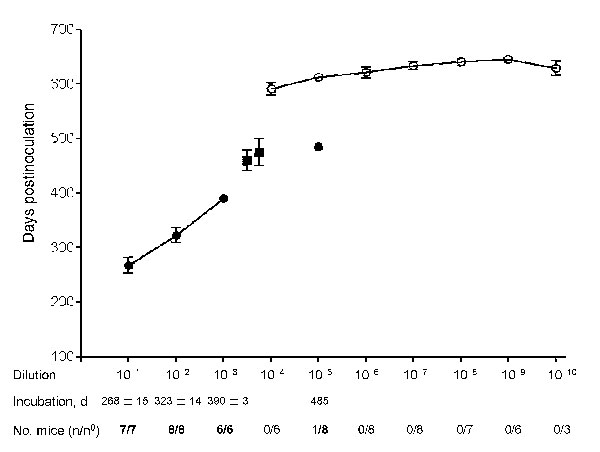Volume 15, Number 5—May 2009
Research
Chronic Wasting Disease Prions in Elk Antler Velvet
Figure 5

Figure 5. Quantification of chronic wasting disease prions. Diseased transgenic (Tg) mice Tg(CerPrP)1536+/– inoculated with dilutions of brain homogenate are indicated by filled symbols Asymptomatic mice are indicated by open circles; time at which asymptomatic aged mice were either euthanized or died of illnesses unrelated to prion disease is shown. Error bars indicate SEM. n/n0 refers to the number of mice developing prion disease divided by the number of inoculated mice. Also shown are the mean incubation times of diseased Tg(CerPrP)1536+/– mice inoculated with antler velvet preparations (filled squares).
Page created: December 16, 2010
Page updated: December 16, 2010
Page reviewed: December 16, 2010
The conclusions, findings, and opinions expressed by authors contributing to this journal do not necessarily reflect the official position of the U.S. Department of Health and Human Services, the Public Health Service, the Centers for Disease Control and Prevention, or the authors' affiliated institutions. Use of trade names is for identification only and does not imply endorsement by any of the groups named above.